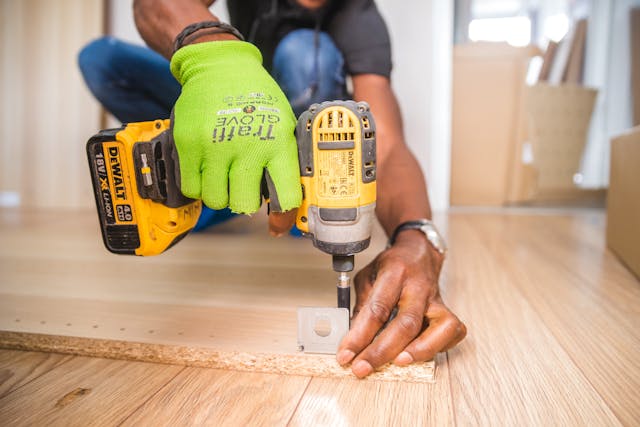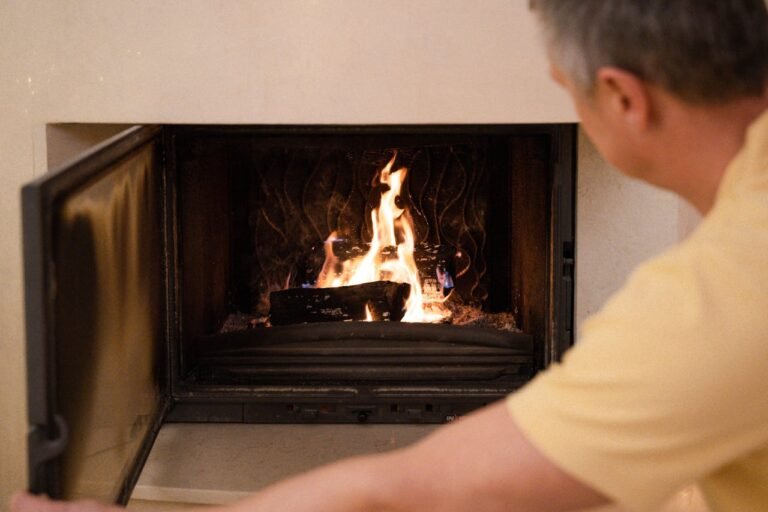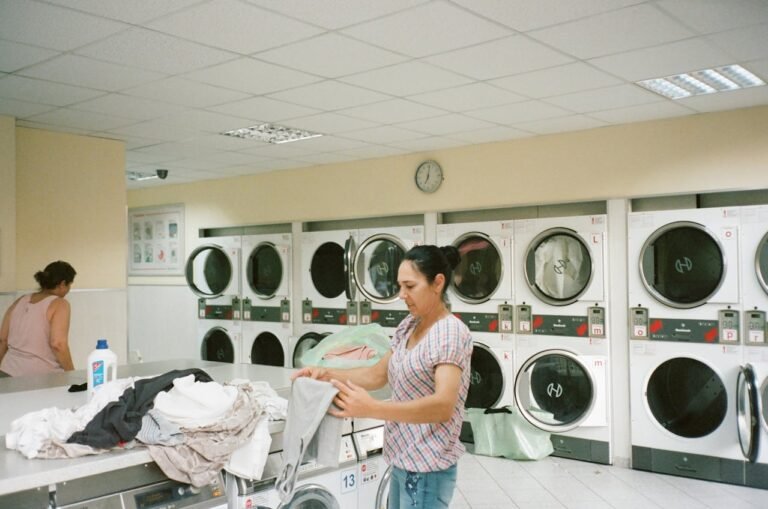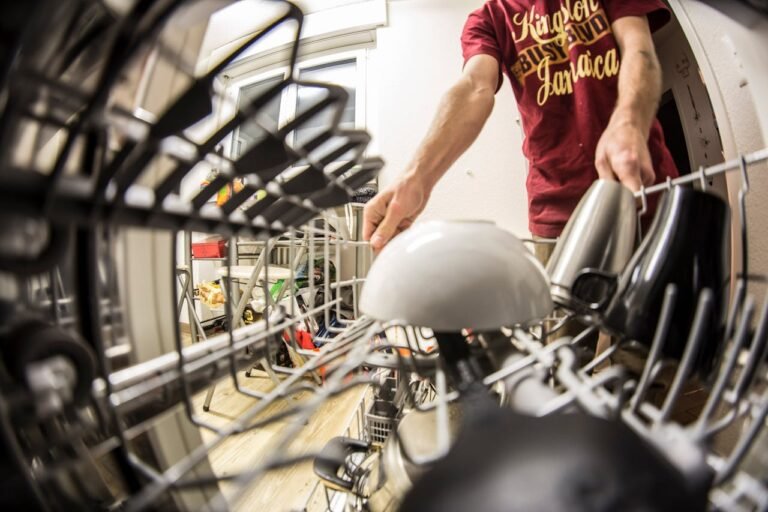Sustainable Approaches to Home Renovation: Expert Insights and Real-Life Stories
Home is where our stories unfold, and our living spaces evolve alongside us. Whether it’s a full-scale renovation or a small DIY project, the choices we make not only shape the aesthetics and comfort of our homes but also impact the environment. Renovating sustainably is not just about jumping on a trend; it’s a chance to make a lasting difference for the planet and for future generations. Let’s dive into how you can approach home renovation and DIY projects with sustainability at their core, sharing real stories, expert advice, and actionable tips along the way.

In This Article
- Why Sustainability Matters in Home Renovation
- High-Impact Sustainable Renovation Practices
- Case Studies: Real-Life Examples of Sustainable Renovations
- Affordable DIY Projects for a Sustainable Home
- Quantitative Comparisons: Sustainable vs. Traditional Renovations
- Innovative Technologies and Emerging Trends in Sustainable Renovation
- Addressing Social Equity in Sustainability
- Lifelong Habits for a Greener Home
- Conclusion
Why Sustainability Matters in Home Renovation
The construction industry is one of the largest consumers of natural resources and contributes significantly to global carbon emissions. According to the European Commission, buildings account for 40% of energy consumption and 36% of carbon dioxide emissions. Older homes, in particular, are less energy-efficient, consuming up to 25 litres (6.6 gallons) of heating oil per square meter annually compared to 3-5 litres (0.8-1.32 gallons) in newer, energy-efficient buildings.
But the good news is that every homeowner can make a difference. By prioritising sustainable materials, technologies, and practices, you not only reduce your carbon footprint but also create a healthier, more cost-efficient living space.
High-Impact Sustainable Renovation Practices
1. Eco-Friendly Flooring: A Green Foundation
Flooring is often the first element to be updated in a renovation project, and choosing sustainable flooring options sets the tone for the entire space. Instead of traditional synthetic materials like vinyl or carpet, several eco-friendly alternatives can enhance the beauty and environmental performance of your home. Below are a few options to consider:
Cork Flooring
Cork flooring is made from the bark of cork oak trees, a renewable resource. The harvesting process does not require cutting down the trees, which means cork flooring is a sustainable choice. It’s also naturally resistant to mould, fire, and termites, making it ideal for high-moisture areas like kitchens and bathrooms.
Personal Story: When I renovated my home in 2022, I chose cork flooring for the living room. It not only added a warm, natural aesthetic but also created a quieter atmosphere due to its sound-absorbing qualities. Over time, the durability of cork has proven to be an asset, and its renewable nature gives me peace of mind every time I walk on it.
Bamboo Flooring
Bamboo is a fast-growing grass that can reach full maturity in just 3-5 years, making it an excellent choice for environmentally conscious homeowners. It’s durable, stylish, and available in a variety of finishes. Bamboo flooring has a similar aesthetic to hardwood but is often more affordable and much faster to regenerate.
Expert Insight: According to a 2023 study published in Buildings, bamboo is one of the most sustainable flooring materials, provided it is harvested from responsibly managed sources. Bamboo’s quick growth rate means that it has a far smaller carbon footprint than traditional hardwood.
Recycled Glass Tiles
For bathrooms and kitchens, consider using recycled glass tiles. These tiles are made from repurposed glass bottles and jars, giving new life to what would otherwise end up in a landfill. Not only are they eco-friendly, but they also offer a modern, vibrant look that can add a touch of luxury to your space.
Pro Tip: Recycled glass tiles are highly reflective, which helps brighten up a room by enhancing natural light. They’re also easy to clean and highly resistant to stains, making them perfect for high-traffic areas.
Engineered Wood
Engineered wood is made from layers of sustainably sourced wood fibres, making it a durable and eco-friendly alternative to solid hardwood. It typically emits fewer volatile organic compounds (VOCs) than traditional wood flooring, which improves indoor air quality.
Personal Story: When renovating my kitchen, I opted for engineered hardwood flooring that mimicked the look of oak. The ease of installation and its environmental benefits made it the perfect choice. It’s been two years now, and the flooring still looks pristine.
Pro Tip: When replacing old flooring, consider salvaging usable materials and donating them to local reuse centres. This reduces waste and gives old materials a second life, contributing to the circular economy.
Learn More: How to Make Your Home More Sustainable: A Comprehensive Guide

2. Eco-Friendly Windows: Maximising Energy Efficiency
Windows are one of the most significant areas where energy is lost in a home. In fact, inefficient windows can cause up to 30% of a home’s heating and cooling energy to be wasted. The good news is that by investing in energy-efficient windows, you can dramatically improve your home’s performance while reducing your carbon footprint.
Energy-Efficient Window Options
Double or triple-pane windows with low-emissivity (Low-E) coatings are designed to improve insulation and reduce heat transfer. These windows can significantly enhance the energy efficiency of your home by keeping heat inside during the winter and blocking heat from entering during the summer.
Real-Life Tip: When renovating, consider replacing old, drafty windows with energy-efficient models. This investment not only reduces your energy bills but also improves your home’s comfort level.
DIY Tip: Sealing Gaps
If replacing windows isn’t yet in the budget, a cost-effective alternative is to seal any gaps around existing windows using caulking or weatherstripping. This simple task can prevent drafts and help maintain a more stable indoor temperature.
Personal Story: Before I replaced the windows in my home, I used weatherstripping on the edges of my existing windows. While it wasn’t a perfect solution, it made a noticeable difference in reducing drafts during the winter months, and my heating bill went down by nearly 15%.

3. Solar Panels: Powering Your Home Sustainably
Solar panels are one of the most effective ways to harness renewable energy and reduce reliance on fossil fuels. While the upfront costs of installing solar panels can be significant, the long-term financial and environmental benefits are undeniable. In regions with ample sunlight, solar panels can offset a significant portion of your electricity usage.
Financial Incentives
Many governments and local utilities offer tax incentives or rebates to make solar panel installations more affordable. In addition, advancements in technology have made solar power more efficient, and prices for installation have dropped over the years.
Expert Insight: According to a document by the National Renewable Energy Laboratory (NREL), solar panel owners can save an average of $20,000 on electricity over the course of 20 years. Additionally, some studies have shown that homes with solar panels can increase in value by up to 4%, making it a sound investment for both your wallet and the environment.
Personal Story: After installing solar panels in 2021, my energy bills dropped by 40%. The savings were substantial, and the return on investment was quicker than I had expected. Not only was I doing my part for the planet, but I was also saving money that could be reinvested into other home improvement projects.
4. Tankless Water Heaters: Reducing Energy Waste
Traditional water heaters are notorious for wasting energy, as they constantly heat and store large amounts of water. Tankless water heaters, however, heat water only when it’s needed, which results in a more energy-efficient system.
Efficiency Benefits
Tankless water heaters can reduce energy use by up to 34% compared to conventional water heaters. They’re also more compact, making them ideal for small spaces or homes that want to maximise storage.
Real-Life Tip: Sarah and James, a couple I know, replaced their old water heater with a tankless model last year. Since making the switch, they’ve noticed a 25% drop in their gas bill. They also enjoy never running out of hot water, even when they’re hosting guests.
Learn More: 10 Eco-Friendly Appliances You Need in Your Home
5. Green Roofs: A Bold Environmental Statement
Green roofs are an innovative way to reduce the urban heat island effect, improve air quality, and insulate your home. These living roofs, which are covered in vegetation, provide natural insulation that keeps homes warmer in the winter and cooler in the summer.
Environmental and Aesthetic Benefits
Green roofs also help absorb rainwater, reducing stormwater runoff and can contribute to biodiversity by providing habitats for birds and insects. Installing a green roof, however, requires structural assessments and professional expertise to ensure your home can support the additional weight.
Local Example: In New York City, green roofs on public buildings have reduced rooftop temperatures by up to 30°F during the summer. This cooling effect not only improves the quality of life for residents but also helps lower energy usage across the city.
Personal Story: I once had the opportunity to visit a friend’s home that featured a green roof. The lush greenery provided a stunning visual contrast to the city’s concrete jungle. It was an eco-friendly feature that turned their home into a natural oasis, both aesthetically and environmentally.
Case Studies: Real-Life Examples of Sustainable Renovations
Case Study 1: The Thompson Family’s Energy-Efficient Home Makeover
The Thompson family, residing in Oregon, embarked on a mission to renovate their 1970s home to reduce energy costs and their environmental impact. Their main goals were to improve insulation, replace outdated appliances, and install solar panels.
Challenges and Solutions:
- Challenge: The house had poorly insulated walls and single-pane windows, leading to high heating bills.
- Solution: The Thompsons added eco-friendly insulation made from recycled denim and replaced the windows with double-glazed energy-efficient models.
Results: The family reported a 40% reduction in energy bills within the first year. Additionally, the solar panels provide enough energy to cover 80% of their electricity needs.
Homeowner’s Testimonial: “We’ve not only cut down our bills but also feel good knowing we’re contributing to a cleaner environment. The investment was worth every penny.”
Case Study 2: Urban Green Roof Transformation
Jane Doe, a New York City resident, transformed her urban rooftop into a green oasis. Jane’s primary goals were to reduce heat absorption, create a sustainable garden, and improve air quality.
Challenges and Solutions:
- Challenge: Limited structural support for a full-scale green roof.
- Solution: Jane collaborated with engineers to install lightweight soil layers and selected low-maintenance plants like sedums and wildflowers.
Results: The green roof reduced Jane’s summer cooling costs by 25% and provided fresh herbs and vegetables year-round. She also noticed a quieter, cooler living space.
Homeowner’s Testimonial: “Not only is my rooftop beautiful, but it’s also functional. It’s amazing how much this small change has improved my quality of life.”
Case Study 3: Water-Saving Renovations in California
The Martinez family in drought-prone California installed a rainwater harvesting system and low-flow showerheads during their home remodel.
Challenges and Solutions:
- Challenge: Limited rainfall during certain seasons.
- Solution: The family paired their rainwater system with a greywater recycling unit to maximise water use efficiency.
Results: They reduced their water consumption by 35% and cut their monthly water bills significantly. The system paid for itself within three years.
Homeowner’s Testimonial: “We’ve saved thousands of gallons of water, and the greywater system was a game-changer. Every homeowner should consider it.”
Affordable DIY Projects for a Sustainable Home
When it comes to embracing sustainability, creative DIY projects can be an engaging way to make a significant impact. Here are some innovative and detailed ideas to inspire action:
Upcycling Old Furniture into New Décor
Transforming old furniture into fresh, stylish pieces not only reduces waste but also adds a personal touch to your home. For example, you can:
- Turn a dresser into a bookshelf: Remove the drawers, sand the surface, and repaint it with eco-friendly paint. Add wooden shelves, and you have a charming book storage solution.
- Repurpose chairs into plant stands: Sand and repaint old wooden chairs, then place potted plants on the seats for an instant garden upgrade.
Building Small Greenhouses from Reclaimed Materials
Small greenhouses can extend your growing season and protect plants from harsh weather, all while promoting reuse. Try this:
- Use discarded window frames or clear plastic sheets to construct the walls and roof of your greenhouse. Old wooden pallets can serve as the base.
- Seal joints with eco-friendly caulk and ensure proper ventilation by adding hinges to one window for easy access.
- Decorate with salvaged paint for a rustic aesthetic.
Crafting Home Insulation Solutions from Recycled Fabrics
Reduce energy costs and repurpose old textiles by creating your own insulation materials. Here’s how:
- Collect old blankets, towels, and denim. Cut them into uniform sizes and layer them into wooden frames to create insulation panels.
- Install these panels behind walls or doors to keep your home warmer in winter and cooler in summer.
- Stitch together unused fabric scraps to create door draft stoppers, sealing gaps to conserve heat.
These hands-on projects are not only sustainable but also rewarding, allowing you to turn waste into functional and beautiful solutions.
Quantitative Comparisons: Sustainable vs. Traditional Renovations
The following table provides a detailed quantitative comparison between sustainable and traditional renovation methods. These metrics highlight the long-term benefits of sustainable choices in terms of cost savings, environmental impact, and resource efficiency.
| Category | Sustainable Renovation | Traditional Renovation |
|---|---|---|
| Upfront Costs | 10-30% higher upfront costs due to premium materials and technologies. | Lower initial investment with cheaper, conventional materials. |
| Long-Term Savings | Energy savings of 20-50% annually (e.g., solar panels, LED lighting). | Limited or no savings; higher recurring utility expenses. |
| Carbon Footprint Reduction | Reduction of up to 80% with energy-efficient systems and materials. | Minimal reduction; often contributes to higher emissions. |
| Lifespan of Materials | Materials like bamboo flooring and recycled steel last 20-50 years. | Shorter lifespan for materials like vinyl and non-treated wood. |
| Energy Efficiency | Minimal reduction often contributes to higher emissions. | Incandescent bulbs and manual systems result in higher energy use. |
| Water Savings | Low-flow showerheads reduce water use by 50%; greywater systems save up to 40%. | Traditional fixtures often lead to excessive water consumption. |
| Waste Generation | Circular economy principles reduce waste by up to 90%. | High waste generation due to non-recyclable materials. |
| Maintenance Costs | Reduced with durable materials and efficient systems (e.g., solar panels require minimal upkeep). | Frequent repairs and replacements increase costs over time. |
| Health Impacts | Low or no VOC paints and eco-friendly cleaning products improve indoor air quality. | VOC-laden materials may lead to health issues over time. |
| Installation Time | Slightly longer due to precision and advanced technologies. | Faster, but often less meticulous, installations. |
Insights from Quantitative Data
- Cost Efficiency: While sustainable renovations involve a higher initial cost, the significant long-term savings and reduced maintenance make them more economical over a building’s lifespan.
- Environmental Benefits: The adoption of sustainable methods results in drastic reductions in carbon emissions and waste production.
- Health and Comfort: Sustainable materials and technologies enhance the living environment by minimising toxins and improving energy management.
By understanding these differences, homeowners can make informed decisions that align with both their budgetary goals and environmental values.
Innovative Technologies and Emerging Trends in Sustainable Renovation
Sustainable renovation is evolving rapidly with the integration of cutting-edge technologies and innovative materials. These advancements are shaping the way we design, construct, and renovate our living spaces, making them smarter, greener, and more efficient. Here are some transformative trends and technologies redefining the industry:
1. Smart Home Systems for Optimising Energy Use
Modern smart home systems leverage AI and IoT to optimise energy consumption. Systems like Google Nest or Ecobee not only manage heating, cooling, and lighting based on occupancy but also provide real-time analytics to help homeowners identify energy inefficiencies.
- Example: AI-driven systems can adjust window shades automatically to maximise natural lighting or minimise heat gain during summer.
- Impact: Studies show that smart home systems can reduce energy bills by up to 20%, providing both economic and environmental benefits.
2. Bio-Based Materials
Sustainable materials are moving beyond recycled products to bio-based innovations like mycelium-based insulation and algae facades:
- Mycelium Insulation: Derived from fungi, mycelium is lightweight, fire-resistant, and has excellent insulation properties.
- Algae Facades: These living systems use microalgae to capture CO2 while generating biomass, which can be converted into energy.
These materials not only lower carbon footprints but also promote circular economy principles by reducing waste.
3. Advanced Energy Storage Solutions
Energy storage technology has advanced significantly with innovations like solid-state batteries and grid-connected home storage systems. These technologies enhance the efficiency of renewable energy systems by storing surplus energy for later use.
- Example: Tesla Powerwall enables homeowners to store solar energy for nighttime use, ensuring energy independence and reducing reliance on non-renewable sources.
4. Retrofitting with Circular Economy Principles
Circular economy retrofitting focuses on reusing and recycling materials during renovations to minimise waste. This approach ensures that old materials like bricks, wood, and steel are refurbished and reintegrated into new projects.
- Case in Point: A London-based project refurbished an old warehouse into a modern office space using 80% salvaged materials, drastically reducing construction waste.
5. Sustainable Water Management Systems
Emerging technologies in water conservation include greywater recycling systems and smart irrigation controllers:
- Greywater Systems: Reuse water from sinks and showers for landscaping or toilet flushing.
- Smart Irrigation: Devices that monitor soil moisture and weather conditions to optimise water usage.
6. 3D Printing in Sustainable Construction
3D printing is revolutionising construction by reducing material waste and energy consumption during the building process. Innovations like concrete alternatives made from recycled materials make this technology even more sustainable.
- Highlight: Entire homes are now being 3D printed using eco-friendly materials, cutting construction timelines by 70%.
7. Heat Recovery Ventilation (HRV) Systems
HRV systems capture heat from outgoing air and transfer it to incoming fresh air, maintaining indoor air quality and reducing heating costs. These systems are becoming a standard feature in energy-efficient renovations.
Addressing Social Equity in Sustainability
Not everyone has access to high-budget renovations. Here are ways to make sustainability more accessible:
- Community Programs: Look for local grants or subsidies for energy-efficient upgrades.
- Affordable Materials: Habitat for Humanity ReStores offers discounted building materials.
- Skill-Sharing: Join or start a neighbourhood group to share tools and renovation skills.
Lifelong Habits for a Greener Home
Renovations are just the beginning. Here’s how to maintain your home’s sustainability:
- Energy Audits: Conduct regular energy audits to identify areas for improvement.
- Eco-Friendly Cleaning Products: Replace chemical-laden cleaners with natural alternatives.
- Water Conservation: Install low-flow fixtures and fix leaks promptly.
Conclusion
Sustainable renovation is a journey—one that starts with informed choices and grows with ongoing commitment. By embracing eco-friendly materials, energy-efficient technologies, and creative DIY projects, you’re not just improving your home; you’re contributing to a healthier planet.
So, whether you’re replacing your flooring or simply repurposing an old piece of furniture, every action counts. Let’s build homes that are as kind to the earth as they are to us.







